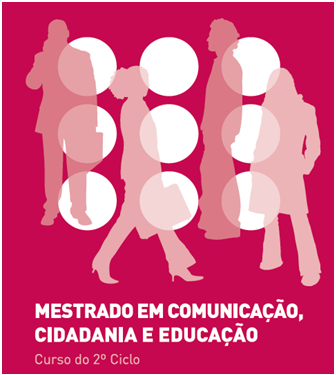Educação para os Media
Estamos a dedicar as últimas sessões à Teoria e Prática da Educação para os Media. Um dos terrenos em que há décadas se promovem experiências interessantes e diversas é a do uso dos jornais e da actualidade na sala de aula, através de programas que, no universo anglo-saxónico, são designados por NIE (Newspaper in Education).
Proponho uma rápida apresentação dos objectivos de um programa (no caso nos EUA e da WAN - World Association of Newspapers) e um sumário dos resultados de um inquérito que, pelo quinto ano, a mesma WAN realizou:
What is NIE?b>
· NIE, the acronym for Newspaper in Education, is the name of an educational partnership between the newspaper industry and participating school systems.
· To our knowledge, NIE programs were first introduced in the 1930s. Today, in some thirty countries there are programs and activities for preschool through college and beyond.
· Schools may use newspapers at all grade levels to teach a variety of subjects -- history, reading, social science, maths, economics, composition, journalism and government, to name a few.
· Outside the school walls, NIE programs can be found in prisons, senior citizen centers, institutions for the physically and mentally challenged and language classes for new residents from other countries.
Newspapers in the Classroom
· Cultivate critical thinking and writing skills with analysis of local, national and world news, political cartoons and editorials.
· Strengthen student reading, writing and thinking skills with all content and analysis of content.
· Clarify and develop decision-making and life skills.
· Sharpen math and problem-solving skills.
· Heighten awareness of current events and issues.
Program Goals
APA's Newspaper in Education programs offer students the opportunity to develop:
· a better understanding of their local community and the world around them.
· an appreciation of their community and its quality of life.
· an understanding of their own values and feelings about the community in which they live.
· an awareness of the importance of the local newspaper as a continuous source of information about their community and the world around them.
· skills in decision-making and problem-solving.
· basic skills through a variety of reading, writing, and research activities.
Fonte: ARKANSAS NEWSPAPERS IN EDUCATION
World Survey on Newspapers in Education
We focused on NIE and young reader programmes, not specifically on the use of Internet.
We have more countries listed than ever. 52 compared to 35 in 1997, and 32 in 1994/95.
(…)
Special pages and supplements are far more used than special newspapers targeted at children/young people. Reasons might be economic or a strong belief in using the main newspaper to reach the young instead of a creating a special newspaper. There is a significant connection between newspapers that have programmes and the use of children as reporters.
We see a considerable growth in the use of free newspapers from 1995 with 46.4% and 1997 with 42.3%, to 2001 with 53.2%
Respondents were most likely to focus on students 12 to 16 years old. They add 11-year-olds as very important when asked about most important age groups. We believe that the respondents consider the age group they mostly work with as the most important.
The newspapers is still the main medium being used, by about 8 of 10 respondents, with the Internet used by slightly more than a quarter of respondents
When asked about topics for which teachers use the newspaper, respondents answered that “critical thinking” is most used, and add that “reading” is most effective. An “NIE Week” is the least common, and the use for “civics and social science” is growing the most.
(…)
Two respondents in ten reported that their country’s government does NIE work. For example, the French education ministry has a special media education section (CLEMI) and the cultural department in Uruguay is involved in this work.
NIE is part of the essential training of teachers in about third of the countries. We asked this question for the first time.
In four out of ten countries, NIE is part of a national statue or “official curriculum.” (In earlier surveys we asked a less rigorous question about whether the curriculum stimulated NIE, with an even higher positive response.)
The pattern for who publishes NIE materials has not changed substantially since 1997. Individual newspapers remain the main publisher of NIE material, more than 80 percent, closely followed by organizations, about 70 percent.
Our respondents were most likely to see increasing support for NIE among teachers (76.6%), children (71.7%) and individual newspapers (65.3%). About half saw increasing support among school administrators and newspaper associations.
Our respondents put a high emphasis on the importance of training teachers, with more than three-quarters considering this activity as “very important,” followed by influencing school officials and developing teaching aids.
Subscrever:
Enviar feedback (Atom)





Sem comentários:
Enviar um comentário